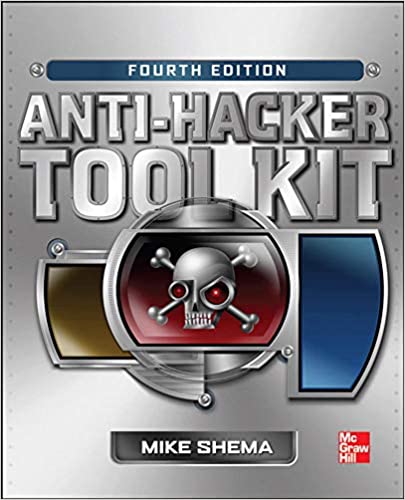The Fourth Year of the Fourth Edition
Today is the fourth anniversary of the fourth edition of Anti-Hacker Tool Kit. Technology changes quickly, but many of the underlying principles of security remain the same. The following is an excerpt from the introduction.

Welcome to the fourth edition of the Anti-Hacker Tool Kit. This is a book about the tools that hackers use to attack and defend systems. Knowing how to conduct advanced configuration for an operating system is a step toward being a hacker. Knowing how to infiltrate a system is a step along the same path. Knowing how to monitor an attacker’s activity and defend a system are more points on the path to hacking. In other words, hacking is more about knowledge and creativity than it is about having a collection of tools.
Computer technology solves some problems; it creates others. When it solves a problem, technology may seem wonderful. Yet it doesn’t have to be wondrous in the sense that you have no idea how it works. In fact, this book aims to reveal how easy it is to run the kinds of tools that hackers, security professionals, and hobbyists alike use.
A good magic trick amazes an audience. As the audience, we might guess at whether the magician is performing some sleight of hand or relying on a carefully crafted prop. The magician evokes delight through a combination of skill that appears effortless and misdirection that remains overlooked. A trick works not because the audience lacks knowledge of some secret, but because the magician has presented a sort of story, however brief, with a surprise at the end. Even when an audience knows the mechanics of a trick, a skilled magician may still delight them.
The tools in this book aren’t magical; and simply having them on your laptop won’t make you a hacker. But this book will demystify many aspects of information security. You’ll build a collection of tools by following through each chapter. More importantly, you’ll build the knowledge of how and why these tools work. And that’s the knowledge that lays the foundation for being creative with scripting, for combining attacks in clever ways, and for thinking of yourself as a hacker.
I chose magic as a metaphor for hacking because it resonates with creative thinking and combining mundane elements to achieve extraordinary effects. Hacking (in the sense of information security) involves knowing how protocols and programs are constructed, plus the tools to analyze and attack them. I don’t have a precise definition of a hacker because one isn’t necessary. Consider it a title to be claimed or conferred – your choice.
Another reason the definition is nebulous is that information security spans many topics. You might be an expert in one, or a dabbler in all. In this book you’ll find background information and tools for most of those topics. You can skip around to chapters that interest you.
The Anti- prefix of the title originated from the first edition’s bias towards forensics that tended to equate Hacker with Attacker. It didn’t make sense to change the title for a book that’s made its way into a fourth edition. Plus, I wanted to keep the skull-themed cover.
Consider the prefix as an antidote to the ego-driven, self-proclaimed hacker who thinks knowing how to run canned exploits out of Metasploit makes them an expert. They only know how to repeat a simple trick. Hacking is better thought of as understanding how a trick is constructed or being able to create new ones of your own.
Each chapter sets you up with some of that knowledge. And even if you don’t recognize an allusion to Tenar or Gaius Helen Mohiam, there should be plenty of technical content to keep you entertained along the way. I hope you enjoy the book.